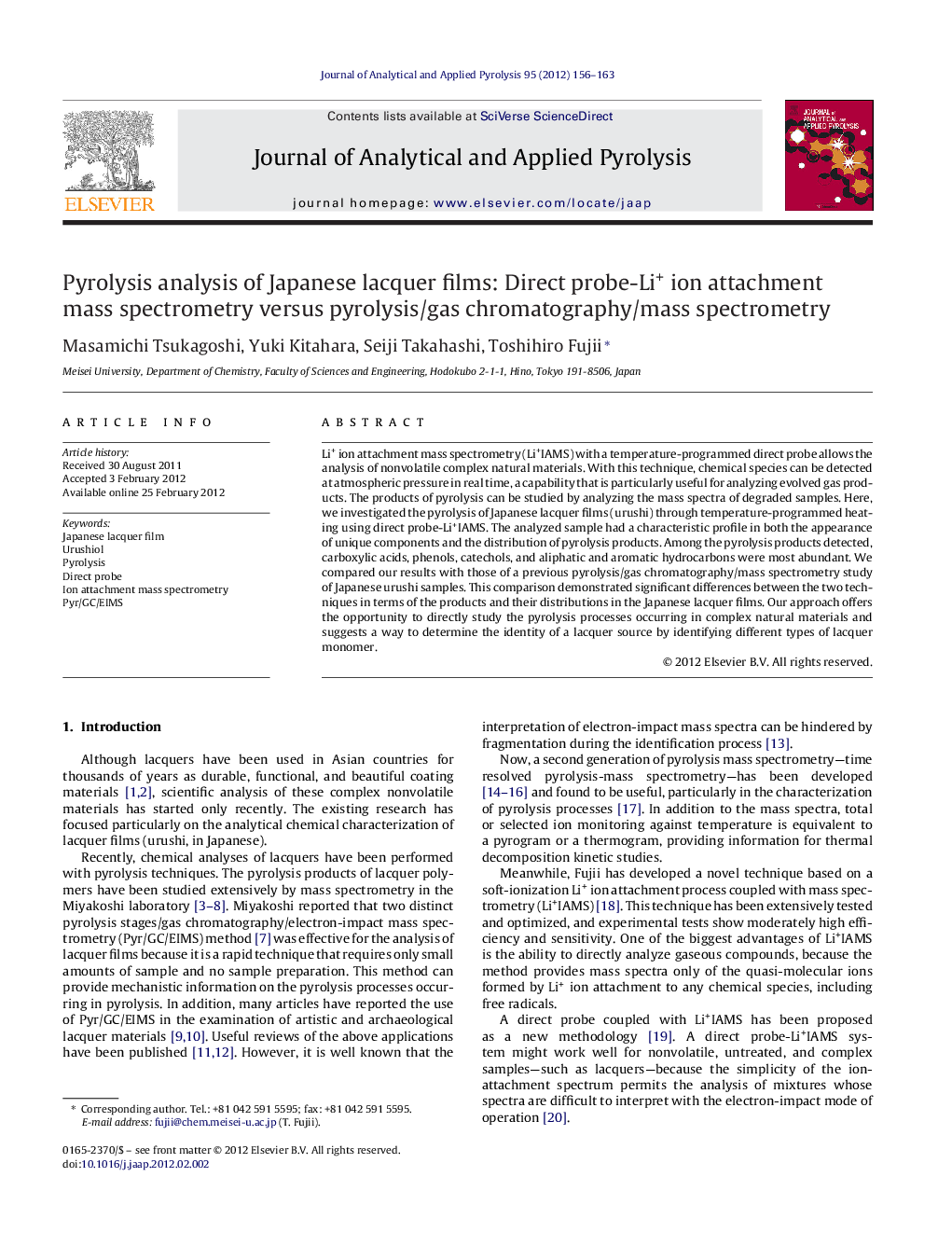| Article ID | Journal | Published Year | Pages | File Type |
|---|---|---|---|---|
| 1197397 | Journal of Analytical and Applied Pyrolysis | 2012 | 8 Pages |
Li+ ion attachment mass spectrometry (Li+IAMS) with a temperature-programmed direct probe allows the analysis of nonvolatile complex natural materials. With this technique, chemical species can be detected at atmospheric pressure in real time, a capability that is particularly useful for analyzing evolved gas products. The products of pyrolysis can be studied by analyzing the mass spectra of degraded samples. Here, we investigated the pyrolysis of Japanese lacquer films (urushi) through temperature-programmed heating using direct probe-Li+IAMS. The analyzed sample had a characteristic profile in both the appearance of unique components and the distribution of pyrolysis products. Among the pyrolysis products detected, carboxylic acids, phenols, catechols, and aliphatic and aromatic hydrocarbons were most abundant. We compared our results with those of a previous pyrolysis/gas chromatography/mass spectrometry study of Japanese urushi samples. This comparison demonstrated significant differences between the two techniques in terms of the products and their distributions in the Japanese lacquer films. Our approach offers the opportunity to directly study the pyrolysis processes occurring in complex natural materials and suggests a way to determine the identity of a lacquer source by identifying different types of lacquer monomer.
► Japanese lacquers are studied using EGA-ion attachment mass spectrometry (IAMS). ► IAMS avoids much of the complexity of electron-impact mass spectra interpretation. ► Among the products, carboxylic acid, phenol, catechol and hydrocarbon were abundant. ► The urushiol monomer was clearly observed as its molecular ion.
